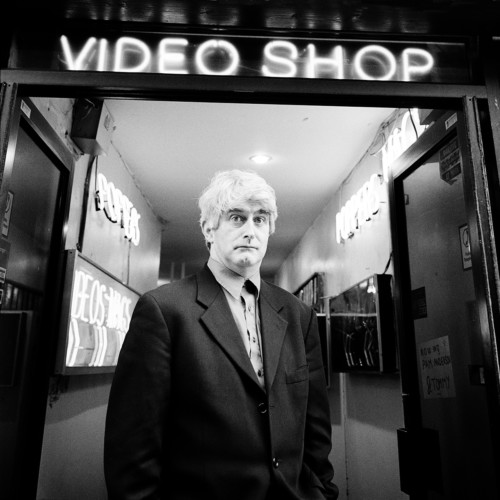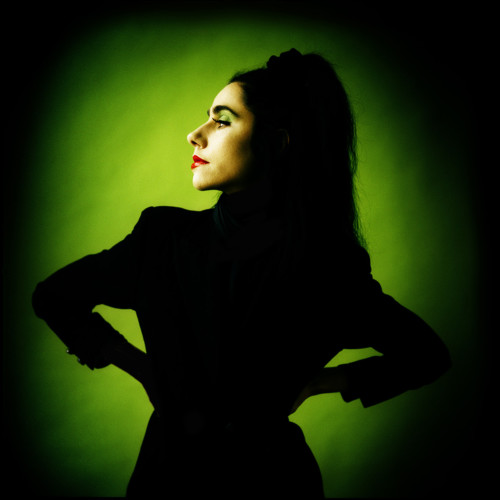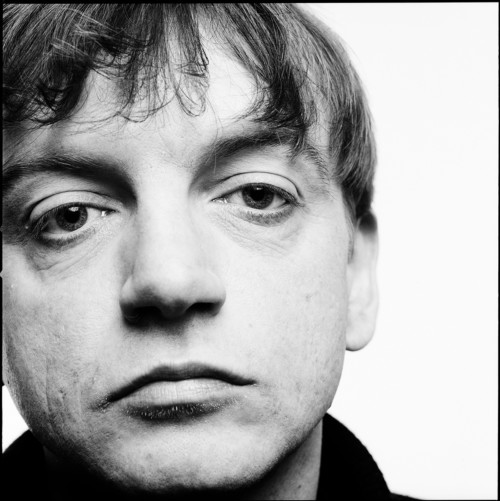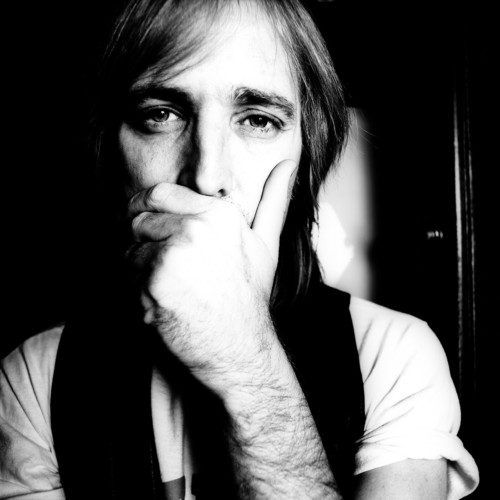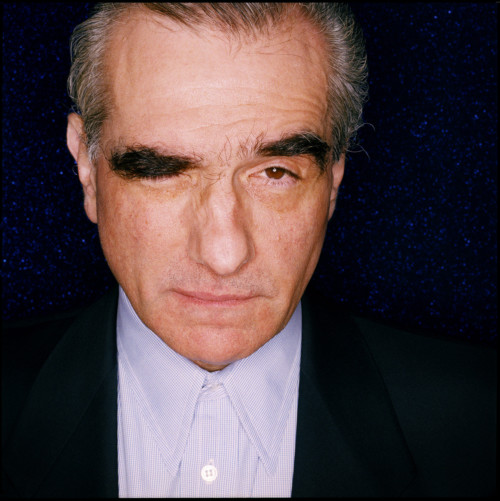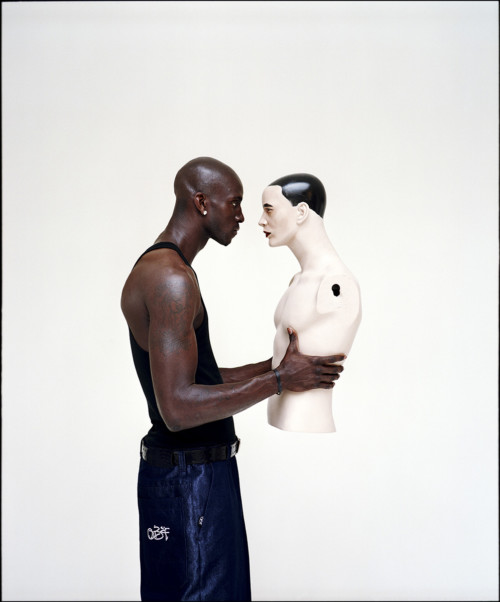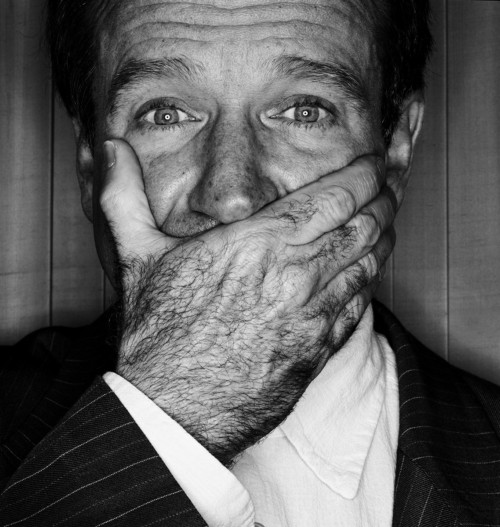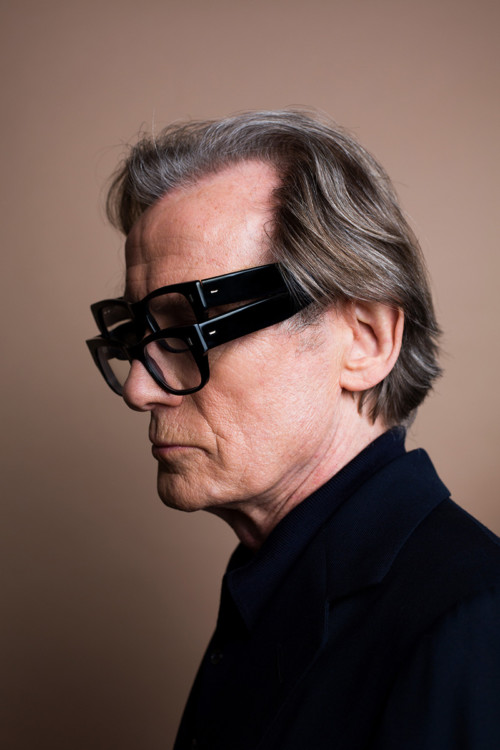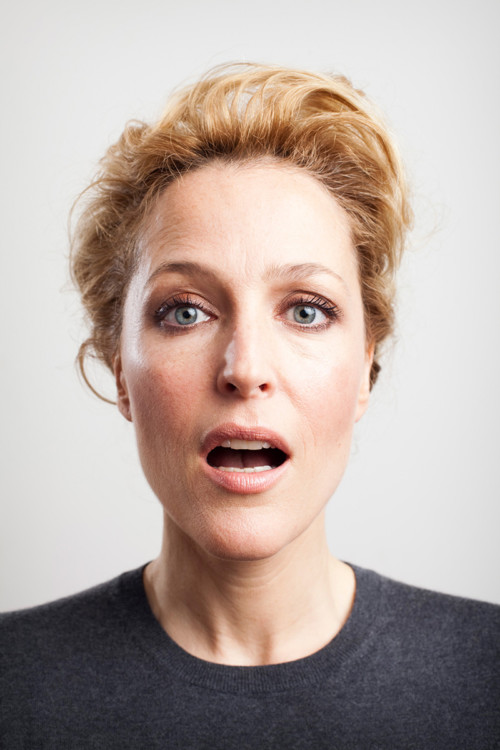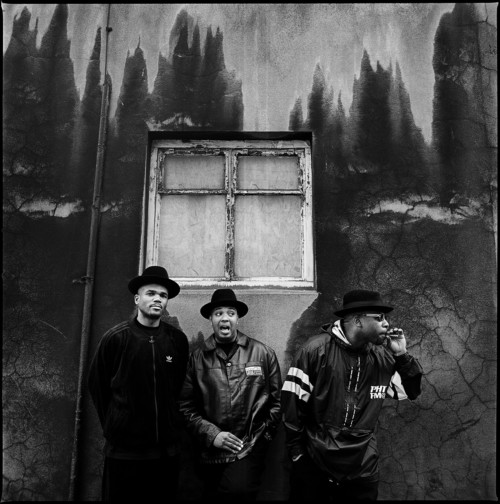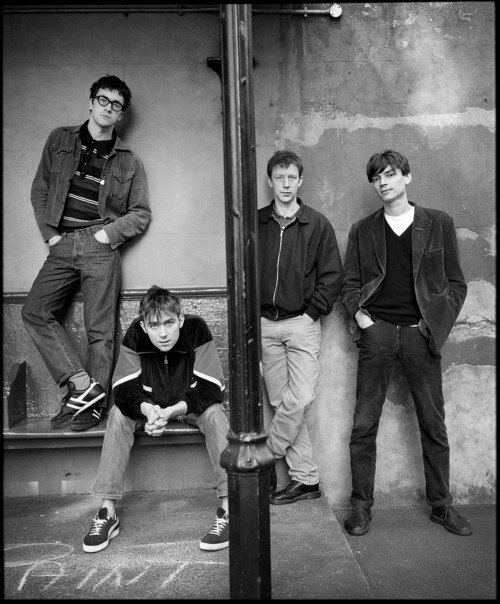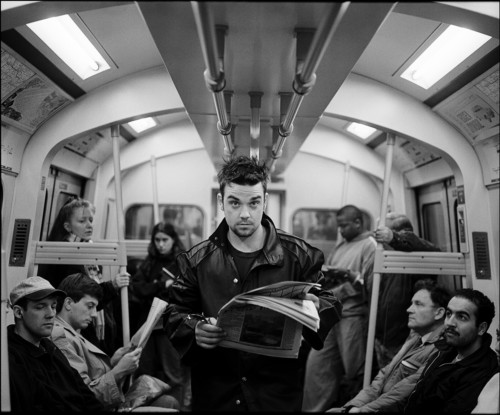-
Harry Borden: Dermot Morgan
£ 625 – £ 5,800Dermot Morgan photographed in Soho, London in February 1998 Harry Borden recalls the shoot:"In February 1998, I was commissioned to photograph Dermot Morgan by The Sunday Times magazine. During the previous three years, the actor’s brilliant comic performances as the star of TV comedy series Father Ted had made him a household name. I was a big fan of the series and was looking forward to the shoot, but despite my determination to come away with strong pictures and my enthusiasm for the subject, this shoot didn’t quite go to plan. I was usually allowed to decide on how I was going to photograph my subjects, but The Sunday Times had a specific idea for this shoot. They wanted colour shots of Dermot outside some sleazy establishments in London’s Soho. He was meant to strike some comic poses looking as if he had been caught out visiting the area’s strip joints and massage parlours, adopting a persona somewhere between his own and Father Ted Crilly’s. I realised from the outset that this idea could be problematic: the people who operate these businesses were not likely to appreciate me using them as a backdrop. I was wary of the situation and tried to prepare, but at the time my wife had recently given birth and I was caught up in the maelstrom of caring for a baby and sleepless nights. It wasn’t until I had driven from my home in Hackney to Soho that I realised I’d left all my camera gear in my hallway at home. I hired a portable flash unit that I was going to use for fill-in flash. I tried to hire a camera from the same company, but they didn’t have any at the Soho branch. Trying not to panic, I went straight to a local Jessops and bought a second-hand Fujifilm 6x9 rangefinder. However, when my assistant and I connected the camera to the flash set-up in a Soho car park, we heard a ‘pop’, the flash started smoking and an acrid burning smell floated across. After that, it wouldn’t work at all. By then, the cold, drizzly afternoon was beginning to get dark. We were also running late. So, on the spur of the moment, I decided to do the entire shoot in black & white. We met Dermot at his management company office in Soho. I covered up my technical problems when I met him, but was inevitably feeling stressed. Dermot himself was a nice man, very kind and compliant, and willing to go along with the idea of doing the shoot around Soho. The shoot lasted a frantic 20 minutes. There’s only so much you can do when you’re being shooed away from one sleazy strip club or massage parlour after another. By the time I shook hands with Dermot and said goodbye, it was beginning to rain but I was hopeful I’d managed to dig out a result, largely due to Dermot’s expressive features. Just 10 days afterwards, I heard the shocking news that Dermot had died from a heart attack, aged 45, a day after he finished filming on the third series of Father Ted. It was so sad. My shoot was the last he ever did. When the photos were published in The Sunday Times, instead of illustrating a light-hearted feature, they were part of Dermot’s eulogy. Shooting in black & white had been forced upon me by my circumstances, but it gave the images a poignancy and authenticity they wouldn’t have had in colour." Available in a choice of physical size options. Please ask for framing options. Please allow 2-3 weeks between order and delivery for an unframed photograph. Framing adds 2-3 weeks. -
Harry Borden: P J Harvey
£ 625 – £ 5,800PJ Harvey photographed in Harry Borden’s Bethnall Green flat, London 1996 Harry Borden recalls the shoot:" Polly Jean Harvey is an alternative rock icon. She has won the Mercury Prize twice, had eight nominations for the Brit Awards, six nominations for the Grammy Awards and was awarded an MBE in 2013 for services to music. I was commissioned to do a portrait shoot in 1996 with Polly by Option, an alternative music magazine of the time. I was a fan of her work, so it was an exciting opportunity. At the time she was popular in trendy circles, but wasn’t widely known yet. She was about as cool as you could imagine and I don’t think she’s ever lost that quality. Back then, I had a flat in London’s Bethnal Green and suggested we use it for the shoot. She turned up dressed completely in black, with green eyeshadow and red lipstick that accentuated her features. We spent a few hours taking the pictures. I chose the green background to match her eyeshadow and complement her lipstick, and set up the backdrop in the hallway. I used natural light from a window, and set it up so that most of the light fell on her face while illuminating only a small part of the backdrop. I shot this image on my Hasselblad CM with an 80mm lens. At that time, I liked a cross-processed look and this one was taken on Kodak Ektachrome Professional ISO 100 transparency film, and processed in C-41 (print film) chemicals. This produced a more contrasty image with little or no shadow detail. It was one of those occasions when cross-processing augmented the subject without being obvious. Afterwards, when a limo came to collect Polly and take her back to where she was staying in Baker Street, I asked if I could go with her. There, we found a little supermarket and I took some pictures of her as an anonymous customer. The whole shoot was great because of the combination of an incredibly photogenic subject with amazing clothes and make-up. It was one of those portrait sessions which, when you get the film back from the processing lab, you’re really delighted with. On a personal note, at the time of the shoot my wife and I were deciding on a name for our unborn child. I put the name Polly into the hat and my daughter was named after her." Available in a choice of physical size options. Please ask for framing options. Please allow 2-3 weeks between order and delivery for an unframed photograph. Framing adds 2-3 weeks. -
Harry Borden: Mark E Smith
£ 625 – £ 5,800Mark E Smith photographed in his room at the Pembridge Court Hotel, Notting Hill, London on 8 March 1993 Harry recalls the shoot: “Confrontational and curmudgeonly, Mark E Smith could be intimidating presence. It was a skill to get him to put down his cigarette and pint of lager and look at the camera. He was staying at the Pembridge Court Hotel in Notting Hill and I set up a little studio in his room.I did three shoots with him over the years and always enjoyed is abrasive mischievous humour." Available in a choice of physical size options. Please ask for framing options. Please allow 2-3 weeks between order and delivery for an unframed photograph. Framing adds 2-3 weeks. -
Harry Borden: Tom Petty
£ 625 – £ 5,800Tom Petty photographed in his NYC hotel room on 3 May 1989 Harry Borden recalls the shoot: “This was my third commission from the NME. I remember the writer commenting that I was obviously making progress having been given my first transatlantic rock-star to photograph in New York. His label gave me a copy of his record Full Moon Fever and I played "Free Fallin'"constantly. Panicking in his cluttered hotel room, I ended up placing him in front of the giant television in a cabinet. I took a total of two rolls—24 pictures in total. This was shot on Kodac Technical Pan film developed in Agfa Rodinal with my beautiful Rolleiflex TLR 2.8 Planar." Available in a choice of physical size options. Please ask for framing options. Please allow 2-3 weeks between order and delivery for an unframed photograph. Framing adds 2-3 weeks. -
Harry Borden: Martin Scorsese
£ 625 – £ 5,800Martin Scorsese photographed at The Dorchester Hotel, London,March 1998 Harry Borden recalls the shoot with the acclaimed director: "In March 1998, Martin Scorsese was in London to appear at an event held by The Guardian. Scorsese was 55 at the time of the shoot and was firmly established as one of the major directors of his era for films such as Taxi Driver, Raging Bull, Casino and The King of Comedy. He’s a genius and undoubtedly one of my cinematic heroes. The Guardian’s sister paper, The Observer, had a one-hour slot with him, during which he was to be interviewed by the journalist William Leith. Afterwards I would have about ten minutes to shoot a portrait. The shoot was going to take place in a suite at the Dorchester Hotel in London. Publicists repeatedly booked The Dorchester for interviews, so I could easily have ended up with lots of people against the same kind of background. Therefore I always took along either a roll of material or my black, white or grey backdrops. They provided a simple and plain alternative to a rather chintzy hotel environment. Prior to this shoot, I went to Brick Lane in East London, where,at that time, there were a lot of fabric shops. I used to buy three metres of fabric and use it as a backdrop, which was much cheaper than buying a roll of Colorama paper. On this particular day, I found some sparkly blue material which had colours and textures that I thought might work well with a ringflash. While the interview was going on, I set up my equipment at the other end of the suite. I had loaded my Hasselblad CM (fitted with a 120mm lens) with a roll of Tri-X black & white film, and as Scorsese was saying goodbye to William Leith I took some informal shots of the director. I showed him a small portfolio of my work so he could see the kind of images I produced. He was quite macho; very smart, straight-talking and quick-witted; but friendly and jovial. In that situation, it was an advantage that I had grown up with a Jewish-American father; he reminded me of my dad and so I didn’t feel intimidated. I just asked him what I wanted him to do. Scorsese was apologetic that we had so little time, and I think he would have given me a lot more time if he had been able to spare some. When he saw the roll of dark blue, sparkly material, he thought it was funny and knowingly said, ‘I see you’re going for the Vegas look.’ His movie Casino, released only a few years earlier, had been based in Vegas so it seemed appropriate. Sometimes, when I have very little time for a shoot I’m panicked into being more upfront about what I want from a sitter. I was desperately trying to find an impactful picture, and I thought the most striking thing about his appearance was his amazing set of eyebrows. So, on the spur of the moment, I decided to ask him to wink as it made his eyebrows even more prominent. It’s not something I do often, but I have occasionally asked people to wink because it does make a good picture. I shot some with his left eye winking and some with his right, but the picture shown here worked best. I only had time to shoot three rolls of film before Scorsese had to go: one roll of black & white at the end of the interview, then two rolls of colour; one of him at three-quarter length then a roll of head shots. The ‘wink’ picture has subsequently been syndicated all over the world, while the others were hardly published at all. It was recently used on a t-shirt for an event in Amsterdam. I think it’s one of the best ‘wink’ pictures out there, because he’s so cool." Available in a choice of physical size options. Please ask for framing options. Please allow 2-3 weeks between order and delivery for an unframed photograph. Framing adds 2-3 weeks. -
Harry Borden: Kevin Garnett
£ 625 – £ 5,800Kevin Garnett photographed at Red Earth Studios, London, 2001 Harry Borden recalls the shoot: "Shooting portraits of sports stars is often difficult. Unlike photographing members of a pop band, for instance, where they recognise a shoot is part of the publicity process, sports stars aren’t usually relying on photographers to promote them. For them, a shoot isn’t exciting or a novelty, it’s a pain in the neck. Therefore, in my experience, you’re often relying on their innate personality to get the pictures you want. Photographing basketball player Kevin Garnett, back in 2001, was a notable exception. That was partly because he’s a good-natured person, and partly because he was doing the shoot for an article linked to the launch of his own clothing brand. Kevin Garnett is a huge name in American sport. He played for NBA teams for 21 seasons, between 1995 and 2016, and is considered one of the sport’s true superstars. I was commissioned to photograph him for American GQ magazine, so there was a good budget and I had the benefit of working with a stylist. I asked the stylist to provide some props that reflected the theme of making clothes, such as some tailor’s dummies and a pair of tailor’s scissors. The idea itself wasn’t particularly original, but it led to what I think is a very interesting portrait. The shoot took place in Red Earth Studios in London, which had a tall ceiling and a skylight which gave wonderful north light. I always got really nice results there, so I was pleased it was available when I got the commission. If you’ve got good available light and a subject like Kevin Garnett, you’re already halfway there. Photographing Garnett was an extraordinary experience, partly because of his physical presence. He’s very much the alpha male, and at the time I photographed him he was just 25 and at his physical peak. He’s just under 7ft tall and very athletic, but perfectly proportioned – just much bigger than most people. His hands were huge and his arms were similar in girth to my thighs. I’m just under 6ft tall, but that extra foot makes a big difference and I remember having to stand on a chair to shoot at his eye level. However, he was very easy-going and playful, like a big puppy – at one point he got me in a headlock while fooling around – and was happy to do whatever shots I requested. For me, the best shot came completely spontaneously, and mainly arose from Garnett’s playfulness. Most of the dummies we had were quite conventional, but one of them, which I think was possibly from the 1930s, had a weird look. At one point, Garnett picked that dummy up and turned it to face him. I took several shots, some with him looking towards the camera, others with his mouth open. But one shot, showing him staring intently at the dummy’s face, had something special about it. My reading of that picture is that there’s an element of homoeroticism about it: one man is staring out another man in a very overt way. But it also has an interesting racial dynamic: the white dummy has an angry and hostile expression, yet it’s completely powerless. I wasn’t consciously aware of these elements when I took the shot and they’re the kinds of things you can only notice after taking a picture. This is the sort of moment that gets you really excited as a photographer. I really love that picture, it’s definitely in my top ten favourite images from my commissioned portraits. However, I’m pretty sure it wasn’t used in the American GQ article because it didn’t fit the idea of it being a fashion-led shoot. More contrived images can go down well with a magazine in the short term, but they don't stand the test of time, because on some level they lack authenticity. Sometimes, a great picture just happens in front of you and you just have to be alive to it." Available in a choice of physical size options. Please ask for framing options. Please allow 2-3 weeks between order and delivery for an unframed photograph. Framing adds 2-3 weeks. -
Harry Borden: Robin Williams
£ 625 – £ 5,800Robin Williams photographed at The Dorchester Hotel, London, 1999 Harry Borden recalls the shoot: "While I was on a trip to New York in 1999, showing my work to magazines there, I had a call from The Observer Magazine. I’d been shooting portraits for the magazine for a few years. This time I was offered the opportunity to photograph Robin Williams, who was promoting his latest film. The only catch was that I had to photograph him the next day at the Dorchester Hotel in London. Following a string of roles in films such as Dead Poets Society, Good Will Hunting and Good Morning, Vietnam, Williams was a major star and this was an exciting offer. So I cut short my trip, booked the earliest available flight from the US and arrived in London the next morning. There, I met up with my colleague, journalist William Leith. The Observer told us we would have an hour for the interview and half an hour for pictures. However, when we arrived at the Dorchester, Williams’ tough female publicist said, ‘You have half an hour for the interview and five minutes for pictures – if we have time.’ While taking in this news, we were led into Williams’ hotel room that was full of people. Williams had a big entourage, including a scary minder who was completely lacking in any warmth or sense of humour. The entire atmosphere felt rather intimidating. After the interview, I started shooting portraits. I was using a Hasselblad CM, a medium-format film camera. The lighting in the room was poor so I used a big Bowens ring flash. Although time was really limited, as I was trying to shoot the portraits, Williams talked constantly. While I was being hurried along, he was doing his shtick and trying to entertain everyone in the room. I found it really irritating. He could have said, ‘Give this guy a break and let him do his job,’ but he just shrugged his shoulders as if it was nothing to do with him and let other people be nasty on his behalf. So I had to persevere. As a passive-aggressive way of telling him to shut up, I asked him to put his hand over his mouth. It was also a way of getting his very hairy hands in the picture, which I’d first noticed years before when he acted in Mork & Mindy. I got one frame of him in that position, then he put his hand down. This was the most interesting image from the few rolls of film I managed to shoot. You can see the use of the ring flash by those distinctive ‘doughnut’ shapes reflected in his eyes. In that kind of situation, where I have very little time, I usually keep taking pictures for as long as I can. However, in this case it was starting to annoy the people in the entourage and further sour the atmosphere. When I took out my Leica and took a couple of reportage-style shots, tempers started to fray. The minder threatened to throw me out of the window if I didn’t stop and the shoot came to an abrupt end. I had rapidly shot four 12-shot rolls – two black & white and two colour. Even though my portrait of him was taken in a brief, frenzied and ultimately unhappy shoot, it’s still one of my favourites." Available in a choice of physical size options. Please ask for framing options. Please allow 2-3 weeks between order and delivery for an unframed photograph. Framing adds 2-3 weeks. -
Harry Borden: Bill Nighy
£ 625 – £ 5,800Bill Nighy photographed in the Sutherland Suite at the Connaught Hotel in Mayfair, London, February 2014 Harry Borden recalls the shoot: "Bill Nighy’s roles in films including Love Actually have made him one of Britain’s best-known actors. His distinctive glasses are an integral part of his brand. In February 2014, he was about to appear on BBC TV in David Hare’s political thriller Turks & Caicos, the second part of the acclaimed Worricker Trilogy. As part of the publicity drive, he was being interviewed for Spectator Life magazine and I was commissioned to shoot the portraits. The venue was the Sutherland Suite at the luxury Connaught Hotel in Mayfair. As always, I arrived at the location early and looked around the suite for good places to photograph him. I aimed to shoot with daylight most of the time, but also brought my lights and a tobacco-coloured backdrop. I’m always happy to do an environmental portrait and the hotel room suited that approach, but I had the backdrop just in case the hotel room was too cluttered. I also have black and white backdrops but felt they would be too sterile; the tobacco-coloured one was different and wouldn’t jar with what he was wearing. Nighy arrived, looking magnificent in a classy suit. He was very charming and erudite, and was very clear about how he wanted to appear. As the shoot progressed, I remember learning a lot about tailoring from him because he was talking in detail about design features he did and didn’t like in suits. I wanted to take a classic portrait, something that would stand out. I put up the tobacco-coloured backdrop and did a few pictures. Then I looked more closely at his glasses—and noticed that by chance we were wearing exactly the same glasses. They were a vintage pair with black frames, made by Cutler and Gross, and I suddenly realised I was missing a potentially interesting opportunity to mess with his brand. At that point I suggested he wear both my glasses and his at the same time. The idea was influenced by the photography of Asger Carlsen, who takes photographs that look like everyday pictures, but which are digitally altered to look strange or surreal. I was trying to do something similar but in-camera. I also decided to shoot him in profile, without showing his eyes. I was photographing him more as an object than a person – a familiar object, but one that has something unusual about it. I took the shot with my 50mm lens, with settings of 1/100sec at f/5, ISO 100. I lit him using a softbox. I think the other people on the shoot thought I was going a bit off-piste when I took this picture. It was one of those occasions when I had got all I needed for the commission and I wanted something for myself. Realising we had the same glasses was a serendipitous moment – if I’d planned it beforehand and asked a stylist to find the same glasses, they would have found it impossible. I was really pleased with getting this completely unexpected picture. It wasn’t used by Spectator Life but was displayed in the 2014 Royal Photographic Society International Print Exhibition. This one has a twist and that’s why I have it in my portfolio." Available in a choice of physical size options. Please ask for framing options. Please allow 2-3 weeks between order and delivery for an unframed photograph. Framing adds 2-3 weeks. -
Harry Borden: Gillian Anderson
£ 625 – £ 5,800Gillian Anderson photographed in the basement at 6 Fitzroy Square, London, 10 July 2012 Harry recalls the shoot: "One of my most enjoyable shoots in recent years took place when I photographed the movie, TV and stage actor Gillian Anderson. She is best known for being FBI agent Dana Scully in cult sci-fi series The X-Files. When I photographed her, in July 2012, I was aware of the series but had never watched it. This was a good thing, because it meant I wasn’t intimidated by her fame. I was commissioned to shoot her portrait by The Sunday Times, which was running an interview with her to coincide with her role in the film Shadow Dancer. The newspaper had hired a location for the shoot: Six Fitzroy Square, an 18th century town house in London’s Fitzrovia. It had a lot of character and offered a range of interior backgrounds as well as an outside area. Sometimes when I’m photographing actors I direct them as if they are on a film set. I ask them to imagine they are in particular situations and then photograph their expressions. With Gillian, for example, I did things like asking her to look startled, or to imagine she was seeing God in the sky. She was brilliant and really got into the idea. This was when I took my favourite picture of the day, in which Gillian has her mouth open as if she’s doing a silent scream. The image was shot against a white wall in the basement. I used two flash heads to light Gillian. One was a raw flash head, without any modifiers, which I used to backlight her. I put it in an adjacent room and used the door frame to flag it off slightly. I used the other head with a softbox, positioned to the right of my camera. I was shooting with my Canon EOS 5D Mark II and a 50mm lens. The picture did well in various competitions and was shortlisted in the The Royal Photographic Society International Print Exhibition 2013. It also generated much discussion on Twitter, particularly among women. They were saying they liked the picture because it wasn’t retouched and showed her as a woman in her mid-40s, rather than trying to make her look younger. Looking at it now, the light is quite hard but it’s still flattering. I like the simplicity of the picture and its enigmatic quality. She appears vulnerable, as if momentarily surprised, and it seems like you’re witnessing a moment. In reality, of course, the moment was created, but its ambiguous nature means that everyone can bring their own interpretation to it." Available in a choice of physical size options. Please ask for framing options. Please allow 2-3 weeks between order and delivery for an unframed photograph. Framing adds 2-3 weeks. -
Harry Borden: Run DMC
£ 625 – £ 5,800Run DMC photographed near their Edgware Road hotel, London on 18 May 1998 Harry Borden recalls the shoot: “ Often I find an environment I'd like to photograph anyway—like this wall by their Edgware Road hotel. I loved the flame-like markings. After placing my subject in the location, I see what happens. This was photographed on my Hasselblad with Kodak Tri-X. Sadly, Jam Master Jay (on the right) was shot and killed in 2002." Available in a choice of physical size options. Please ask for framing options. Please allow 2-3 weeks between order and delivery for an unframed photograph. Framing adds 2-3 weeks. -
Harry Borden: Blur
£ 625 – £ 5,800Blur photographed on Beaufort Street, Chelsea on 10 March 1994 Harry Borden recalls the session: "This was a shoot for Select, the colourful Britpop magazine of the 90s. First I took individual portraits in a studio behind the Bluebird restaurant on the Kings Road in Chelsea. It’s hard to believe now but the plan was to take these individual portraits and in post-production, colour each band member as a different race. I guess they wanted to illustrate the post-modern, multiracial Britain that the band celebrated. Thankfully the ‘black-face’ idea didn’t happen and they used this picture. After the studio session, I took them for a walk down Beaufort Street towards the river. We strolled into a Victorian tenement block and I found this strange lean-to. ‘Wet paint’ was written in chalk on the floor and there was an inconvenient streetlamp obscuring my view but I think it worked as a location. I used the post to make two photographs in one, dividing the group into its constituent parts. I often don’t know what I’m looking for but intuitively know when I’ve found it. When we got back to the studio, the mood was celebratory as we were shown the artwork for Parklife, their third studio album with the snarling greyhounds. The headline in the magazine declared them the best British band since the Smiths and 25 years on, maybe that doesn’t seem too hyperbolic." Available in a choice of physical size options. Please ask for framing options. Please allow 2-3 weeks between order and delivery for an unframed photograph. Framing adds 2-3 weeks. -
Harry Borden: Robbie Williams, London (1997)
£ 625 – £ 5,800Robbie Williams photographed on the London Underground, March 1997 Harry recalls the shoot: “In early 1997, Robbie Williams was at a difficult stage in his career, and it wasn’t easy to predict what would happen next. Aged 23, he had left Take That the previous year but had yet to release his first solo album. When I was commissioned by music magazine Select to photograph him in March 1997, he seemed a little lost. The magazine had booked a studio in Clerkenwell, central London, and wanted me to shoot portraits to go with an interview by journalist Caitlin Moran. But Robbie wasn’t in the best frame of mind for the shoot. I remember clearly that I had little or no conversation with him. He wore an amazing striped suit, and I photographed him manically jumping around. It wasn’t an intimate type of shoot at all; it was just a bit crazy. His PR people were looking on and wringing their hands with anxiety. However, even in this unpredictable and dishevelled state, he was very charismatic and handsome. He had amazing eyes and was great to photograph. Aside from the studio portraits, I had other plans for the shoot. I’m a big fan of Dennis Stock’s famous photographs of actor James Dean in Times Square, and I wanted to try something similar. I liked the idea of photographing someone charismatic in an anonymous setting, so I suggested that we go outside. The people from Robbie’s management company were very concerned about him being mobbed, but I tried to persuade them that it was a good idea. I said we would just walk through Clerkenwell to Farringdon tube station, where I’d get some shots of him on the concourse, perhaps reading a newspaper. They reluctantly agreed, though I didn’t tell them my real plan – to photograph him on a London Underground train. As Robbie and I walked through the station with an entourage behind us, I told him what I was planning to do, and he agreed. So when a train pulled into the platform, he and I jumped on just as the doors were about to close. Everyone else, including his PR people and my assistant, was left on the platform. Robbie and I went one stop on the train to King’s Cross station. I had my Fujifilm GW670 (a 6x7 rangefinder camera with a 90mm lens), some Kodak Tri-X film and a tripod. I shot about 10 frames. Nobody on the train said anything to us or barely even looked up. We got out at King’s Cross and caught the train back to Farringdon. If I wanted to shoot something like that today, I’d probably have to get official permission or set it up with lots of extras. But we got away with it then because we did it so quickly. If you’re fleet-footed and completely brazen, quite often people don’t bat an eyelid. If you ask: ‘Is it okay to take the picture?’ you’re just giving people the opportunity to object. Here, we winged it and I think that energy and spontaneity is woven into the fabric of the picture. The best picture I’ve taken of him is the shot on the tube. It was selected for the 1997 John Kobal Photographic Portrait Award exhibition. It was exactly the picture I’d wanted. Even today, I can look at it and feel pleased that I managed to pull off my idea.” Available in a choice of physical size options. Please ask for framing options. Please allow 2-3 weeks between order and delivery for an unframed photograph. Framing adds 2-3 weeks.

